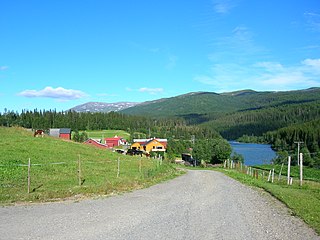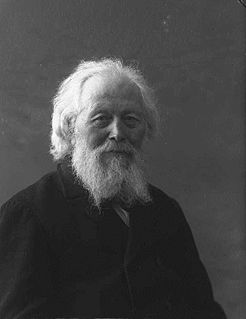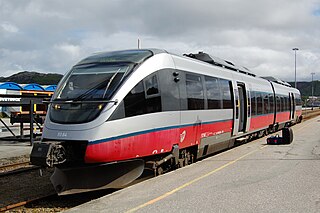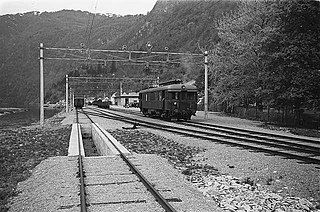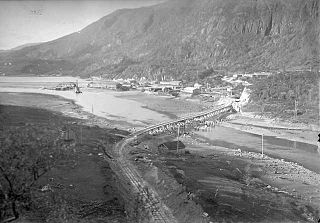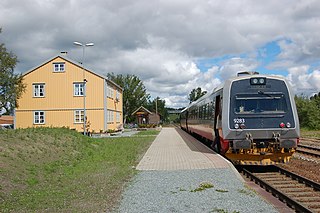| Dunderland Line | |
|---|---|
 | |
| Overview | |
| Native name | Dunderlandsbanen |
| Type | Railway |
| Status | Assimilated into the Nordland Line |
| Termini | Storforshei Gullsmedvik |
| Operation | |
| Opened | 1904 |
| Owner | Dunderland Iron Ore Company |
| Operator(s) | Dunderland Iron Ore Company |
| Character | Iron ore freight |
| Technical | |
| Line length | 23.7 km (14.7 mi) |
| Number of tracks | Single |
| Track gauge | 1,435 mm (4 ft 8 1⁄2 in) standard gauge |
| Electrification | No |
The Dunderland Line (Norwegian : Dunderlandsbanen) was a 23.7 km (14.7 mi) railway line between Gullsmedvik in the town of Mo i Rana and the village of Storforshei in Rana Municipality in Nordland county, Norway. Since 1942 the line has been part of the Nordland Line. The line was originally built and owned by Dunderland Iron Ore Company, which used it to freight iron ore from their mine at Storforshei to the port at Gullsmedvik.
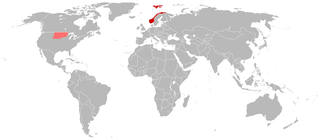
Norwegian is a North Germanic language spoken mainly in Norway, where it is the official language. Along with Swedish and Danish, Norwegian forms a dialect continuum of more or less mutually intelligible local and regional varieties, and some Norwegian and Swedish dialects, in particular, are very close. These Scandinavian languages, together with Faroese and Icelandic as well as some extinct languages, constitute the North Germanic languages. Faroese and Icelandic are hardly mutually intelligible with Norwegian in their spoken form because continental Scandinavian has diverged from them. While the two Germanic languages with the greatest numbers of speakers, English and German, have close similarities with Norwegian, neither is mutually intelligible with it. Norwegian is a descendant of Old Norse, the common language of the Germanic peoples living in Scandinavia during the Viking Era.
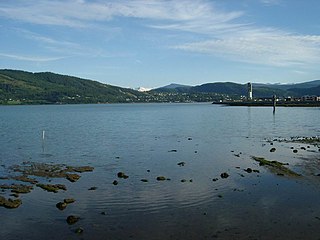
Mo i Rana is a town and the administrative centre of the municipality of Rana in Nordland county, Norway. It is located in the Helgeland region of Nordland, just south of the Arctic Circle. Some of the outlying areas of the town include the suburbs of Båsmoen and Ytteren in the north and Selfors in the east and Åga/Hauknes/Dalsgrenda in the south.
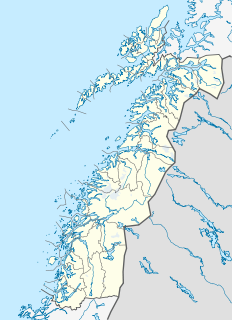
Storforshei is a village in the Dunderland Valley in the municipality of Rana in Nordland county, Norway. The village is located along the river Ranelva, about 25 kilometres (16 mi) northeast of the town of Mo i Rana. The European route E06 and the Nordland Line both pass through the village. The village of Nevernes and the Nevernes Church both lie about 3 kilometres (1.9 mi) to the south.
Contents
The line was built to exploit iron ore which had been discovered by Nils Persson and later sold to Edison Ore-Milling Company. Construction of the line started in 1902, it was completed two years later and revenue services started in 1906. The mine had many operating difficulties, and operations fell to a halt several times for years. With the German occupation of Norway in 1940, the Wehrmacht and Organisation Todt started building the Nordland Line, with the Dunderland Line being upgraded and connected to the mainline on 15 May 1942. After the war, the Norwegian State Railways had to carry out extensive upgrades to the line for it to meet modern standards.

Iron ores are rocks and minerals from which metallic iron can be economically extracted. The ores are usually rich in iron oxides and vary in colour from dark grey, bright yellow, or deep purple to rusty red. The iron is usually found in the form of magnetite (Fe
3O
4, 72.4% Fe), hematite (Fe
2O
3, 69.9% Fe), goethite (FeO(OH), 62.9% Fe), limonite (FeO(OH)·n(H2O), 55% Fe) or siderite (FeCO3, 48.2% Fe).
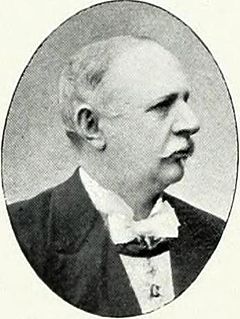
Nils Persson was a Swedish consul, businessman, and politician from Helsingborg.

The Edison Ore-Milling Company was a venture by Thomas Edison that began in 1881. Edison introduced some significant technological developments to the iron ore milling industry but the company ultimately proved to be unprofitable. Towards the end of the company's life Edison realised the potential application of his technologies to the cement industry, and formed the Edison Portland Cement Company in 1899.
